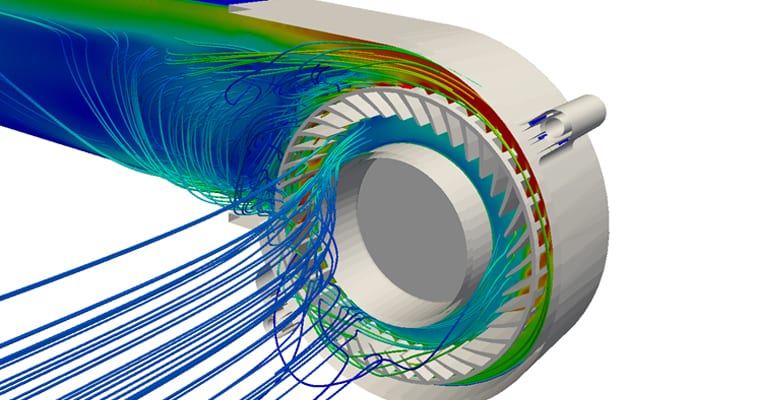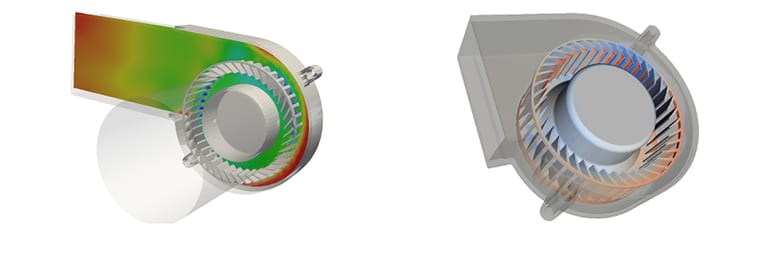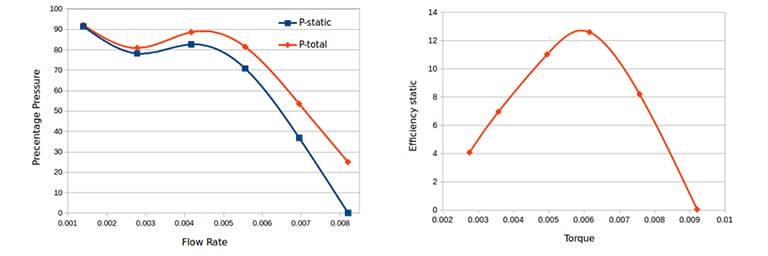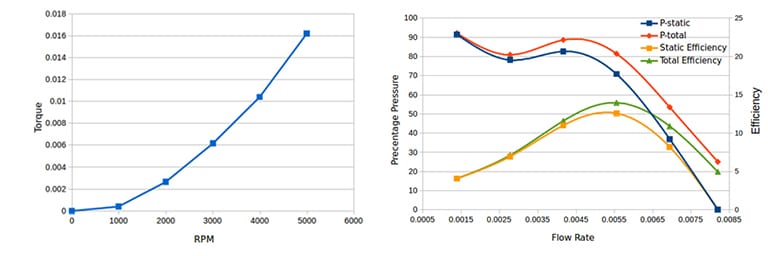The centrifugal fan (often called squirrel cage fan) is a mechanical device specifically designed to move air or other gases. Due to their simple design, centrifugal fans are more easily manufactured than other types of fans, which renders them more time- and cost-effective to produce. This makes centrifugal fans a popular choice for air-handling applications.
Their rotating impellers utilize either forward- or backward-curved blades to increase the speed and volume of an air stream. Additionally, centrifugal fans have significantly superior aerodynamic properties than axial fans, for example.
When selecting fans for HVAC applications, many engineers choose centrifugal fans for their energy efficiency (reaching up to 84% static efficiency), durability even in corrosive environments, ease of maintenance, and suitability for multiple airflows or pressure combinations.[1]
Centrifugal Fan Design How to Predict a Centrifugal Fan's Aerodynamic Efficiency?
As mentioned above, the squirrel cage fan has the advantage of superior aerodynamics. This is an important factor that is considered during the design process, and it is important to make sure that design engineers make the most out of its properties to maximize efficiency. This is where computational fluid dynamics (CFD) simulations come into play.
CFD is the method used for the computerized calculation of fan aerodynamic quality. CFD can accurately predict the fan’s performance in the early design stage, analyze various CAD models, reduce the number of physical prototypes and expensive testing, and optimize the design for maximum performance.
SimScale’s CFD solution allows designers of centrifugal fans to accurately calculate flow rates, static pressure, total pressure, static efficiency, total efficiency, peak total efficiency, forces and moments acting on the fans, and more. These simulations can be carried out entirely in the browser, providing flexibility, collaboration options, and access to high computing power— all from a standard desktop PC or laptop.
Centrifugal Fan Design CFD Analysis of a Centrifugal Fan Design
An example of CFD analysis is illustrated below. This analysis carried out with SimScale used the design of a centrifugal radial compact fan with a forward-curved impeller. This type of fan is commonly used for electronics cooling applications such as thermal management for infotainment, IT, and telecom systems.
The objective of this 3D simulation was to predict the fan’s aerodynamic performance and identify key areas for design optimization.


The contours above show a 3D visualization of static pressure, flow velocity, and the aerodynamic forces acting on the squirrel cage fan rotor.
The performance curves obtained from this analysis are key indicators that will inform whether the design meets the requirements or needs further optimization.


References
- https://www.pelonistechnologies.com/blog/six-benefits-of-centrifugal-fans


